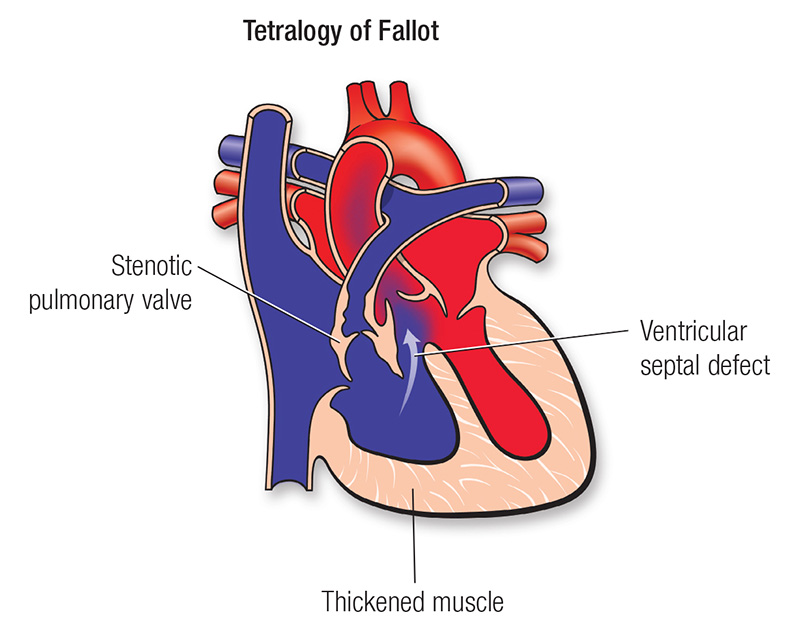
Tetralogy Of Fallot
Tetralogy of Fallot is a congenital heart defect and presents as “Blue babies”. It has four
characteristics:
The symptoms of tetralogy of Fallot include:
Tetralogy of Fallot may be diagnosed with fetal echocardiogram (ultrasound) before your baby is born.
Doctors might also make the TOF diagnosis before your new born leaves the hospital if they hear a murmur or see a blue tint to the skin. Your primary care pediatrician might detect the same symptoms during a check-up. And sometimes a parent might notice TOF symptoms and bring the baby to a doctor or hospital.
Diagnosis of TOF may require some or all of these tests:
Surgery is required to repair tetralogy of Fallot. Typically in the first few months of life the surgeon will perform open heart surgery to patch the hole (VSD) and widen the pulmonary valve or artery.
In some cases, depending on the unique needs of the patient, a temporary repair may be needed until a complete repair can be done. The temporary repair involves connecting the pulmonary arteries (which carry blood from heart to lungs) with one of the large arteries that carry blood away from the heart to the body. This increases the amount of blood that reaches the lungs, and so increases the amount of oxygen in the blood.
Because of enormous strides in medicine and technology, today most children born with heart conditions like tetralogy of Fallot go on to lead healthy, productive lives as adults. Sometimes children with TOF experience heart problems later in life, including a leaky heart valve and irregular heartbeat (arrhythmia). Medicine or repeat surgery may be required.
If your child has had surgical repair of tetralogy of Fallot, he or she will require lifelong care by a cardiologist.
We follow patients until they are young adults, coordinating care with the primary care physician. Patients will need to carefully follow their doctors advice, including staying on any medications prescribed and, in some cases, limiting exercise.
